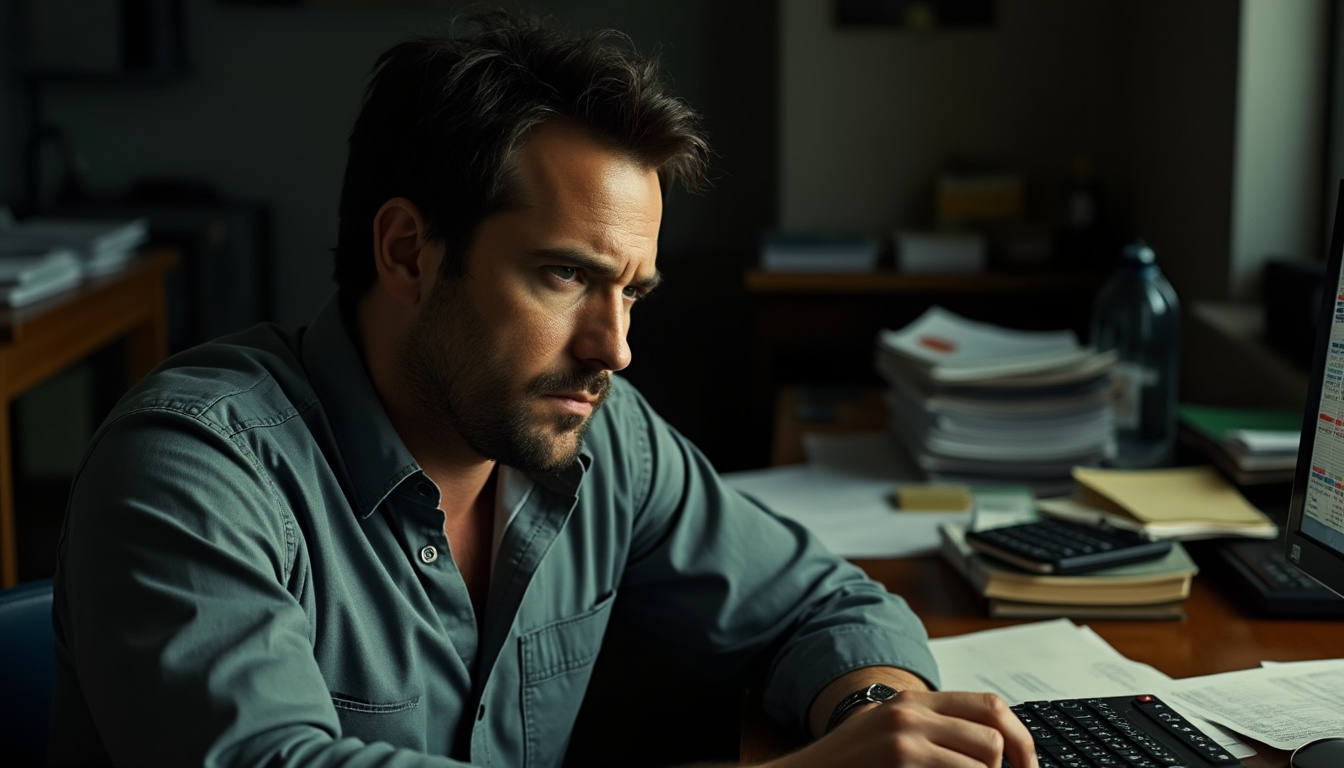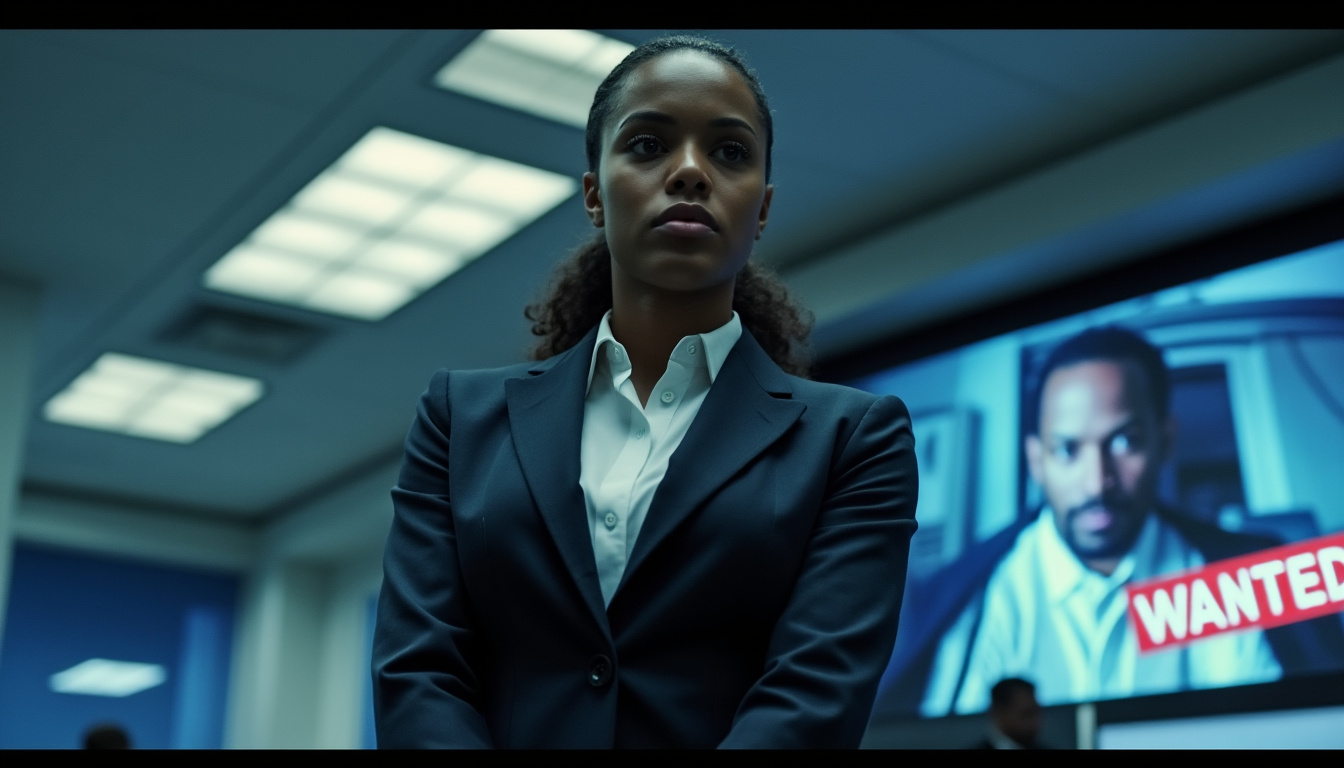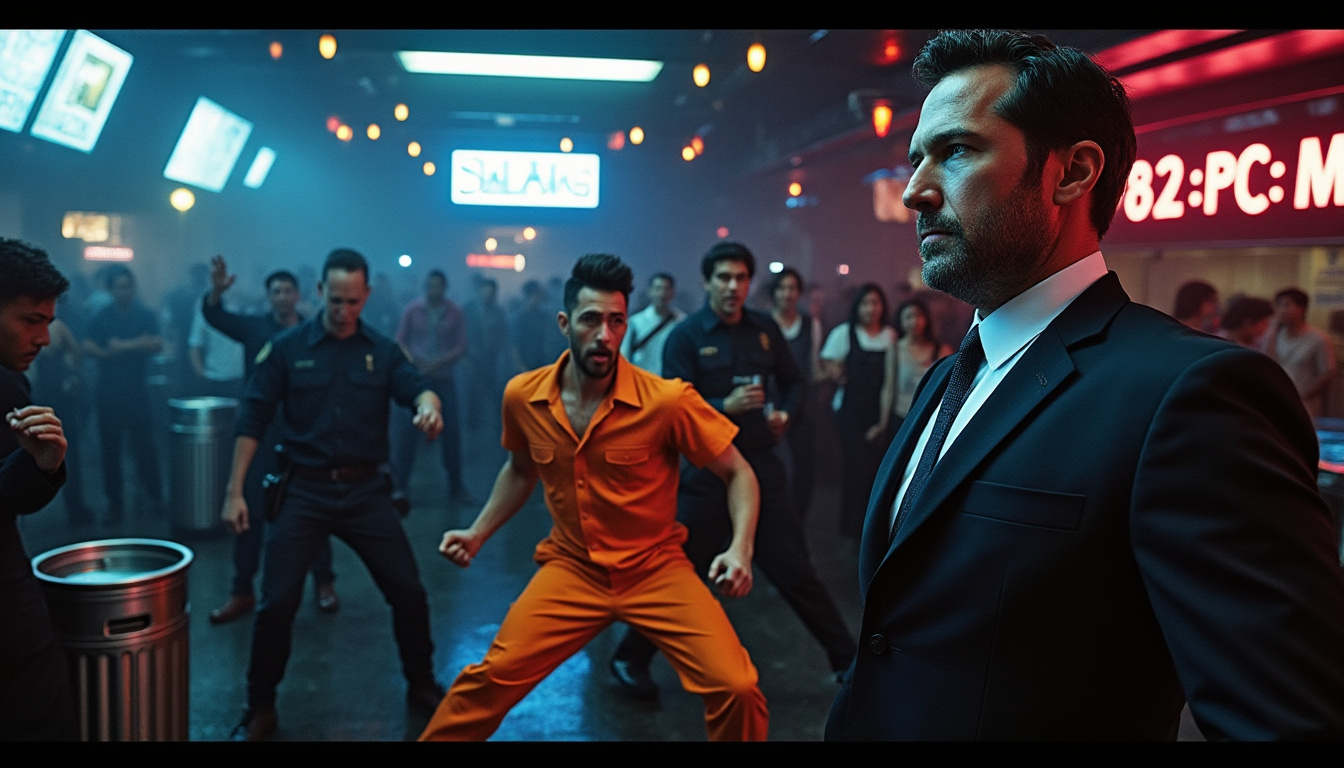After nearly a decade, the sequel to the unexpected hit “The Accountant” has emerged, sporting a more defined character and an engaging narrative continuity. “The Accountant 2” marks a notable shift in tone, leaning into humor while still delivering thrilling action, primarily through the dynamic interactions between its core characters. The film offers a unique take on the buddy action genre, evolving from the darker aspects of its predecessor to embrace a lighter, yet still intense, atmosphere. Ben Affleck reprises his role as Christian Wolff, a man with remarkable intellect wrapped in a socially rigid exterior, adding depth to his character in surprising ways.
The Evolution of Christian Wolff: A Humor-Infused Action Hero
Christian Wolff returns as a nuanced character, oscillating between a meticulous accountant and an unexpected action hero. This sequel showcases a refined evolution of his character, where the humor previously hidden under layers of seriousness is brought to the forefront. Affleck’s portrayal retains the essence of Wolff—a socially awkward savant—but introduces a playful edge that contrasts effectively with the film’s tension.

Character Traits and Development
In this sequel, Wolff’s social difficulties manifest in amusing ways. For instance, there’s a memorable scene where he optimizes his online dating profile using algorithmic precision. The humor in his character emerges from his brutally honest interactions and hyper-literal worldviews. This juxtaposition enhances the film’s entertainment value by combining intense action with lighthearted moments.
- Social Awkwardness: Wolff remains an outsider in social scenarios.
- Intellectual Humor: His analytical nature results in unexpected and funny insights.
- Emotional Vulnerability: The sequel explores his struggles unexpectedly, providing moments of connection.
Affleck’s ability to navigate these shifts deftly adds layers to Wolff’s character, making him more relatable and human than in the first installment.
Wolff and Braxton: The Unlikely Duo
The introduction of Jon Bernthal’s character, Braxton, as Wolff’s estranged brother represents a significant shift in the film’s narrative structure. Their contrasting personalities flourish, creating comedic tension and providing a buddy-cop vibe against the backdrop of thrilling action. Their relationship evolves as they navigate through their complex family history, adding depth to the film.
This sibling dynamic serves as the backbone of the film, offering comic relief amidst high-stakes scenarios. It remains essential to highlight their mutual development from disconnection to tentative camaraderie, which propels the narrative forward in unexpected ways.
A Gripping Opening: Setting the Tone
The film kicks off with a gripping, dialogue-light sequence that reinstates the calculated and dangerous world Wolff inhabits. The portrayal of Treasury Agent Marybeth Medina, played by Cynthia Addai-Robinson, introduces a substantial emotional layer early on. Her reactive decision to involve Wolff after a personal loss adds urgency to the unfolding narrative. It’s a charged opening that thrusts viewers into the action, establishing the stakes immediately without lengthy exposition.

Establishing the Stakes
The precarious nature of the universe that Wolff navigates is underscored as he is drawn into a web of encrypted secrets and dangerous assassins. The relationships formed and the risks taken resonate throughout the plot, maintaining tension effectively. The film plays with audience expectations, setting a rhythm that intertwines the humor and action seamlessly.
| Element | Impact on Plot |
|---|---|
| Opening Sequence | Establishes tone and stakes, introducing the threat level. |
| Character Development | Creates emotional resonance, making the audience care. |
| Dynamic Duo | Enhances comedic elements, enriching the narrative. |
Such a carefully crafted opening sequence draws the audience into the story, effectively setting up the inescapable danger that defines the film’s climax.
The Thrilling Combination of Action and Comedy
As the film progresses, it embraces humor more prominently while not shunning its roots in action. Gone is the exclusively serious tone of the original; this sequel invites audiences to laugh alongside thrilling moments. This tonal shift plays a critical role in making it engaging, as it continuously balances both elements.

Action Sequences: Choreography and Practical Effects
The action sequences are choreographed with a blend of creative tactics that amplify the viewing experience. A standout role is played by Affleck and Bernthal’s physical performances, both enhancing the urgency of the action scenes and captivating the audience. One particular action scene intermeshes humor with thrills, demonstrating the challenges of both characters in a moment of crisis.
- Grounded Stunt Work: Practical effects elevate the realism in fight sequences.
- Dynamic Pairing: The chemistry between Awflack and Bernthal translates into electrifying moments.
- Innovative Set Pieces: Unique locations and situations yield unexpected outcomes and entertainment.
This harmonious meld of genres leads to exhilarating encounters that promise entertainment, shifting the actions into memorable spectacles rather than mere fillers. As action bubbles with hilarity, audiences find themselves engaged entirely in the thrilling escapades that unfold.
Moments to Remember
Amidst the action, the film does not shy away from quieter moments that permit character development. One particularly striking scene comprises a dance lesson—a rare opportunity for Wolff to unwind and connect. While it may not progress the plot directly, it serves as a needed respite, reflecting the evolving dynamics between characters.
| Scene | Purpose |
|---|---|
| Dance Lesson | Offers emotional insight and character growth. |
| Action Showdown | Climactic tension and stakes realization. |
As such moments punctuate the general pace, they bind the humor with tension effortlessly, underlining personal stakes throughout the film.
The Role of Villains and Stakes
While the first film focuses on a central antagonist driving the narrative, this sequel chooses to deviate by featuring a series of morally bankrupt characters instead. This deliberate choice results in a scattershot approach to the antagonistic forces challenges the protagonists throughout the runtime.
Lack of a Central Antagonist
The absence of a well-defined villain might disorient viewers, as the threats become diluted by the numerous antagonists introduced throughout. Though each provides a temporary obstacle, they fail to leave a lingering impression or elevate the stakes significantly, allowing the film to lean more heavily into its character dynamics.
- Rotating Cast of Antagonists: Each adds a different flavor but lacks depth.
- Morally Ambiguous Motives: The antagonists’ intentions remain vague, stalling narrative momentum.
- Intellectual Threats: The danger often feels cerebral rather than immediate.
By choosing not to focus on a singular villain, the film reorients audience expectations; however, this decision may prove divisive for those who thrive on traditional hero-villain setups.
The Climactic Finale
Despite its narrative hurdles, the film expertly delivers, with a climactic shootout igniting the final act. This sequence—with practical effects and precise staging—showcases the best action of both installments. The choreography enhances the visceral appeal, creating a synergy between character actions and audience engagement. Affleck and Bernthal’s synchronized movements create palpable intensity that makes the action unmissable.
| Filming Aspect | Effect on Scene |
|---|---|
| Practical Effects | Enhances the realism and immersion for viewers. |
| Staging | Draws viewers into the characters’ plight with urgency. |
The final confrontation exemplifies the cumulative tension built throughout the film, concluding the journey with vigorous force and memorable spectacle.
Redefining Expectations: A New Identity
The overall tone of “The Accountant 2” aims not to surpass the original’s narrative complexity but rather to redefine its identity as an entertaining blend of humor, action, and emotional nuances. The character of Wolff transcends the arithmetic framework previously seen, revealing him as someone who can fight fiercely while struggling with personal connections and emotional distances.
A Shift in Narrative Focus
This sequel’s heart lies in its ability to blend disparate elements skillfully. While it diverges from the somber legacy of its predecessor, it offers viewers a new avenue for engagement that highlights the importance of family and connection. While some may prefer the darker tones of the original, the humor and action aligns with current trends in entertainment that favor lighter storytelling without sacrificing depth.
- Dynamic Character Evolution: Wolff grows through experiences with Braxton.
- Brotherly Bonding: Highlights themes of family amidst chaos.
- Humorous Situations: Enhances relatability for the audience.
Ultimately, the film successfully reconfigures audience engagement through its creative maneuvers, captivating those who may find a new appreciation for the series despite differing tonal directions.
Final Verdict: An Enjoyable Action-Comedy Experience
In the landscape of sequels, “The Accountant 2” stands out, offering a unique blend of action and humor. Affleck’s nuanced performance elevates the film, inviting the audience to explore deeper emotional themes wrapped in thrilling set pieces. The film may not satisfy everyone’s craving for darker narratives, yet its rich character interplay and humorous moments create an entertaining experience.
With its stylistic choices and action-packed sequences, the sequel has carved its place in cinematic discussions, leaving audiences curious about what lies ahead for Wolff. It symbolizes the evolution of storytelling within the action genre, captivating fans of the original while attracting new audiences with a fresh, comedic twist.
For further insights on this film and its response from critics, check out reviews from The New York Times and Collider.


